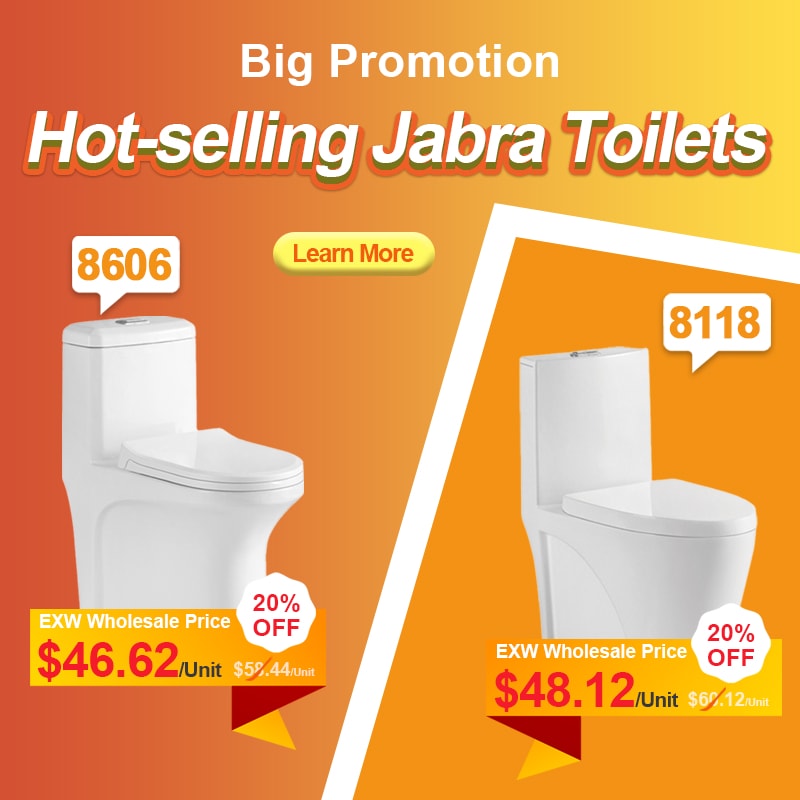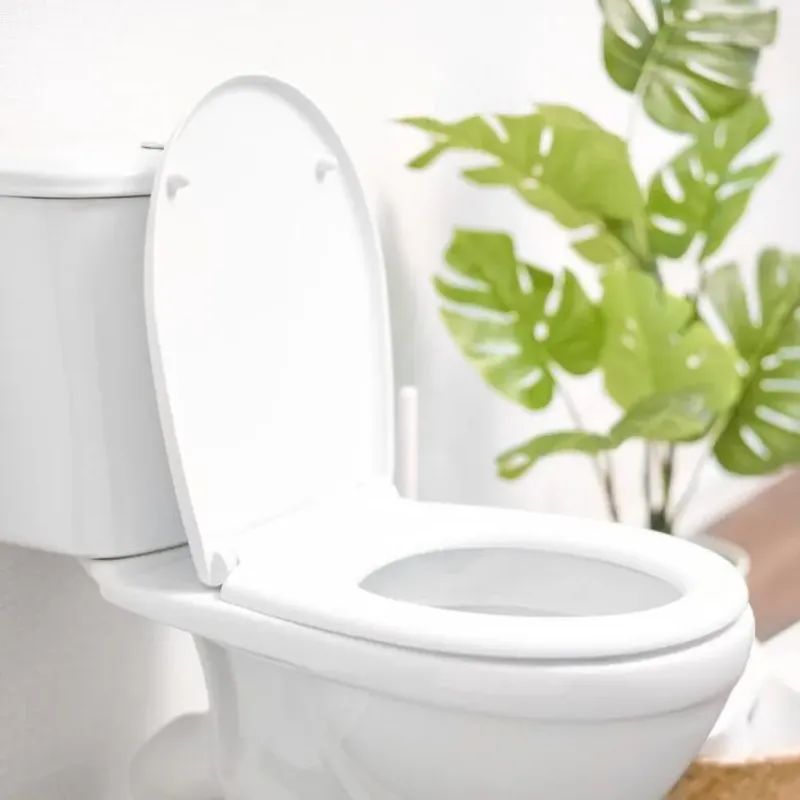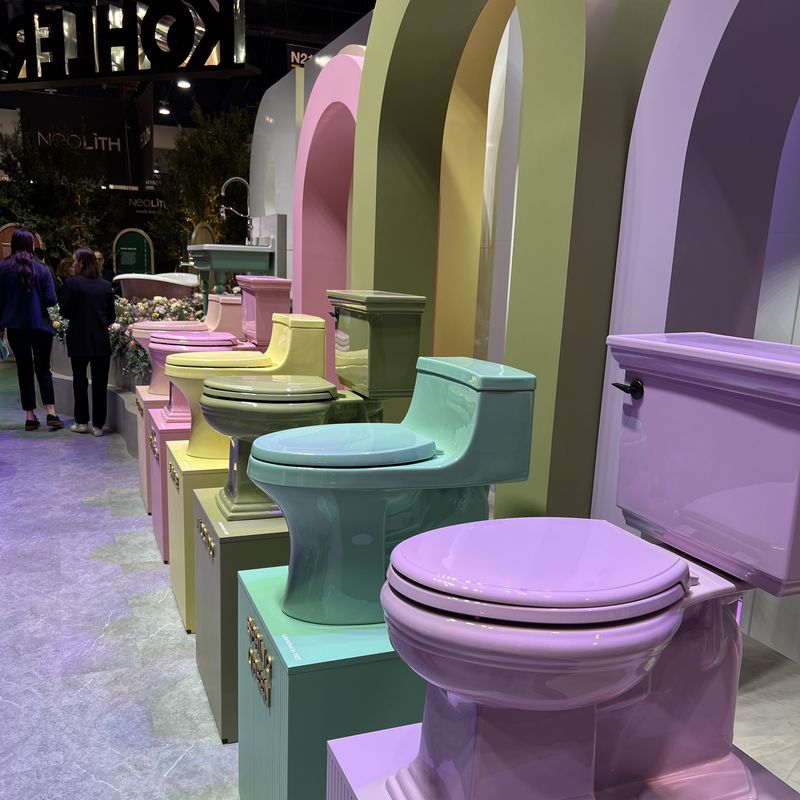 English
English
Jabra Sanitary is a sanitaryware supplier offering toilets, sinks, faucets, bathtubs, etc., at competitive prices. If you're a distributor, wholesaler, or project contractor, get a quote today!
 $23.9 Limited-time Offer
$23.9 Limited-time Offer Consignment Policy
Consignment Policy 20 Years of Experience
20 Years of Experience
When it comes to the bathroom, the toilet is often an overlooked aspect of design and functionality. However, the toilet shapes can significantly impact your space's aesthetic appeal and practicality.
In this article, we will explore the different toilet shapes available, their unique features, specific needs of toilet bowl shapes, and considerations when you choose the best fit for your family.
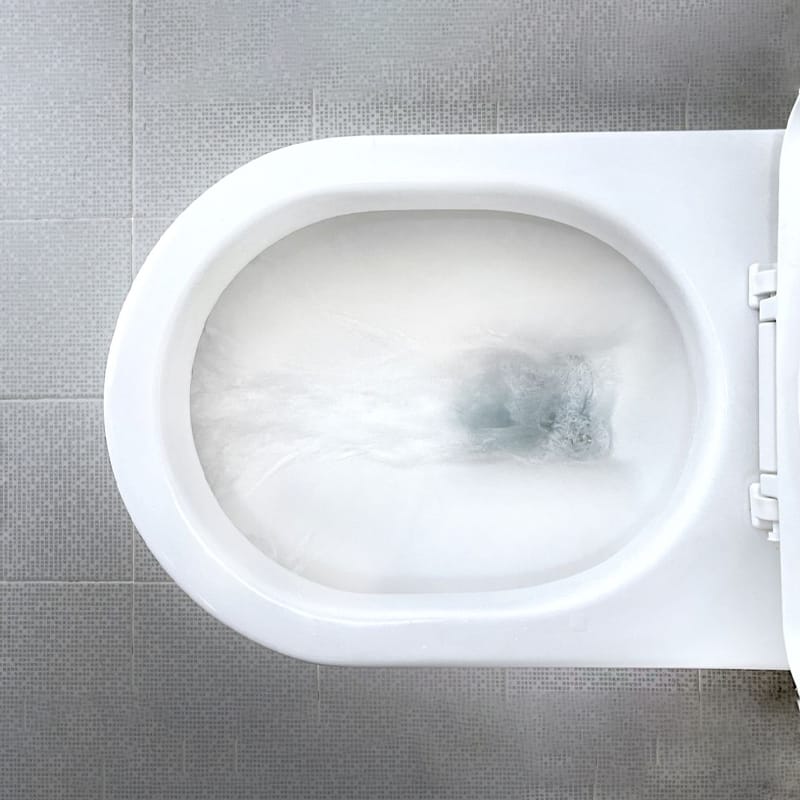
Table of Contents
6 Common Toilet Bowl Shapes
Comparing Types of Toilet Seat Shapes
Toilet Shapes for Specific Needs
Important Considerations: Which Toilet Bowl Shape is Best?
FAQs
Closing Thoughts
6 Common Toilet Bowl Shapes
Choosing the right toilet shapes is crucial for families of different age groups. With various designs available, each shape offers unique features tailored to different preferences and bathroom styles.
Here are the most common toilet shapes to consider:
1. Square Base Toilet
The square base toilet features a contemporary design with clean lines. Its angular base creates a sturdy and minimalist look, ideal for bathrooms with geometric or industrial themes.
Additionally, the square shape offers an aesthetic edge while maintaining functionality.
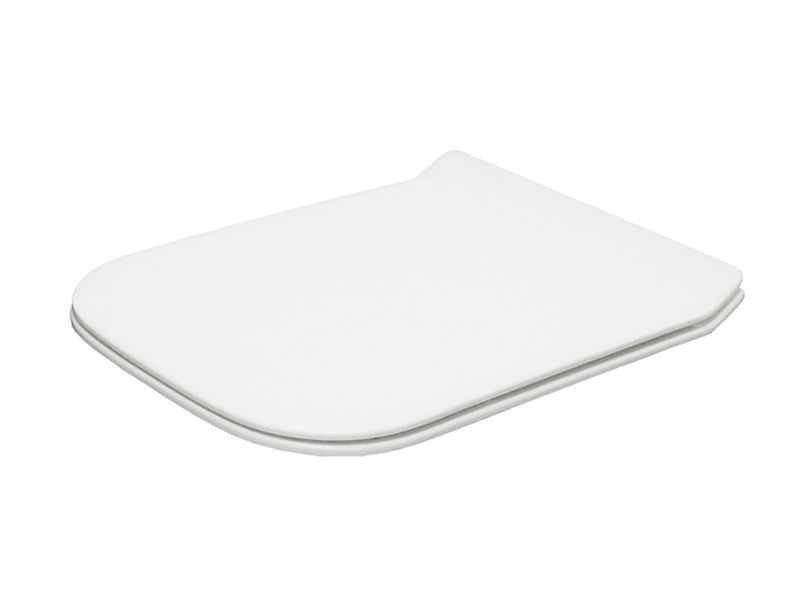
2. Oval Toilet Bowl
Oval toilet bowls are known for their elongated, curved design that balances comfort and style. These oval toilets are versatile, fitting seamlessly into traditional and modern bathrooms.
An elongated toilet is a favorite among homeowners looking for maximum comfort, since it provides more sitting space.
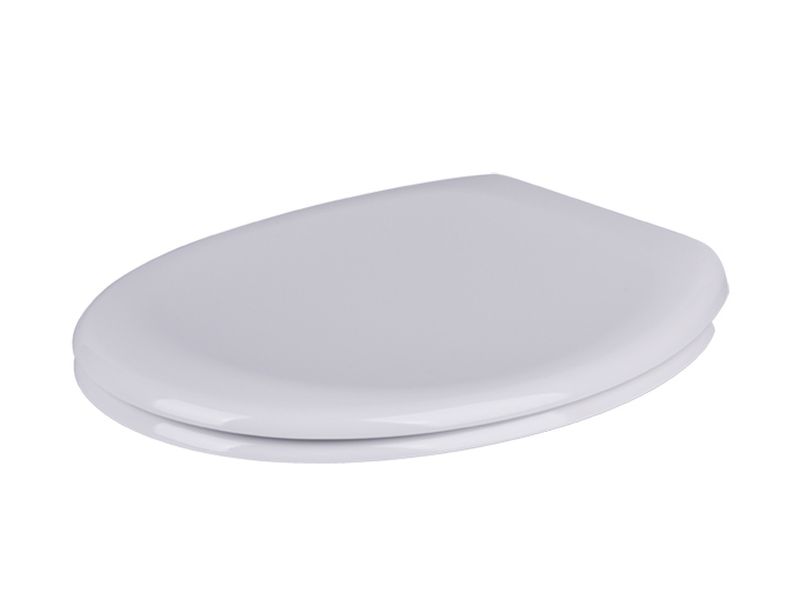
3. Round Toilet Bowl Seat
Round toilet bowls usually measure around 16 and a half inches from the mounting holes to the front of the toilet bowl rim. The rough-in size and seat heights are generally the same as an elongated toilet.
The main difference is how much it protrudes outward. Their circular design is classic and functional, catering to homes where space efficiency is a priority. Despite their smaller size, round toilet bowls provide adequate comfort for most users.
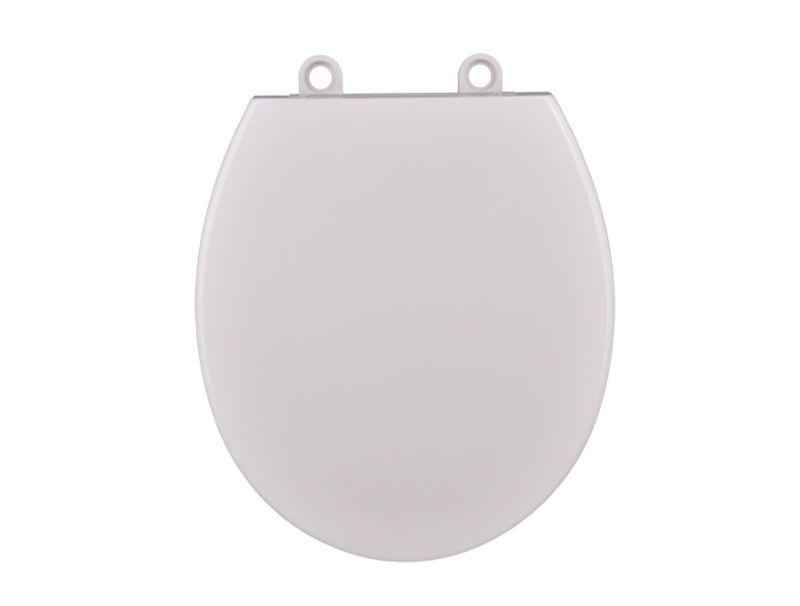
4. D Shape Toilet Seat
The D-shaped toilet seat combines modern aesthetics with ergonomic design. It typically measures between 14 and 16 inches for the bowl and has a rough-in size between 10 and 14 inches.
Its distinctive shape features a flat back and a rounded front, creating a sleek look. This design offers visual appeal, but remember that comfort is traded off for beauty.
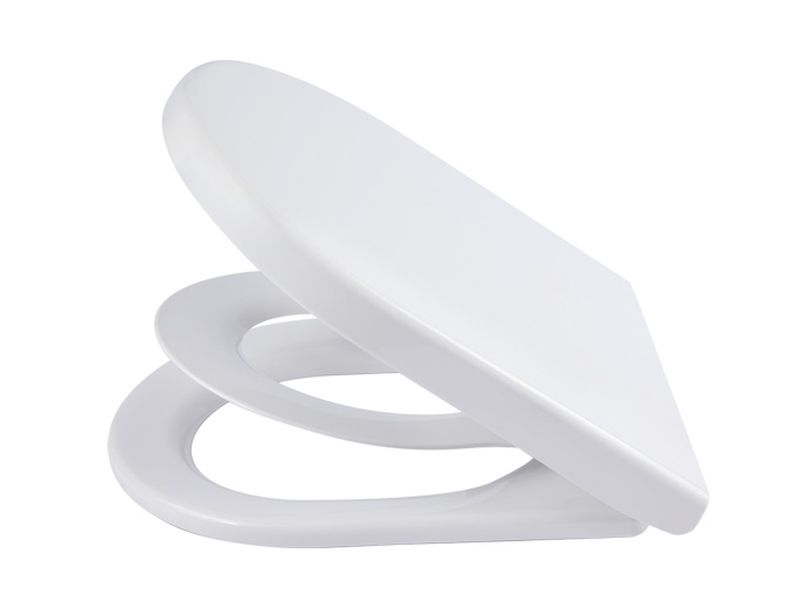
5. U Shape Toilet Seat
Commonly found in commercial spaces, the U-shaped toilet seat is designed with hygiene in mind. Its open-front design prevents direct contact, making it a practical choice for shared bathrooms.
Though not prevalent in homes, it offers an innovative solution for specific use cases.
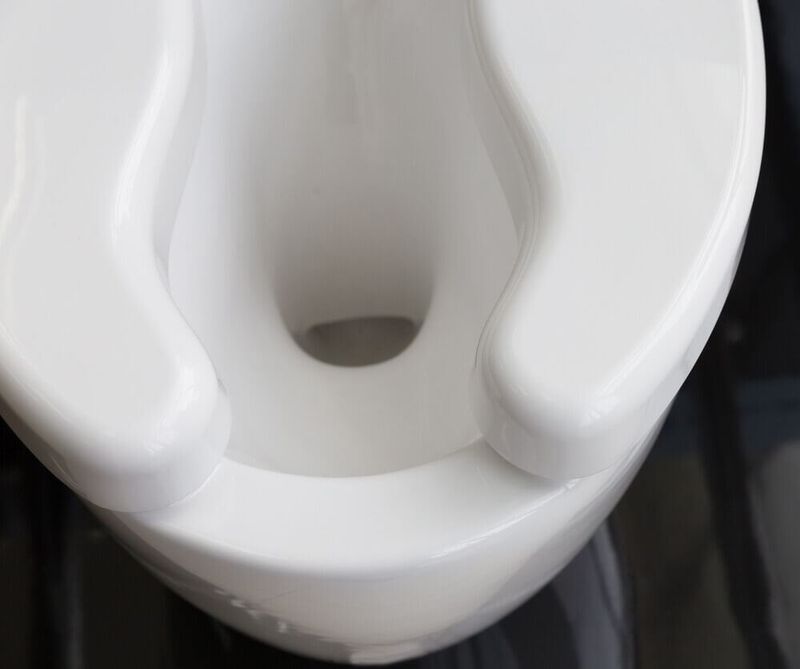
6. Egg Shaped Toilet
The egg-shaped toilet, with its smooth and rounded design, symbolizes modern luxury. Its organic form adds a unique aesthetic appeal to bathrooms, blending comfort with style.
This shape is perfect for high-end or designer bathrooms.
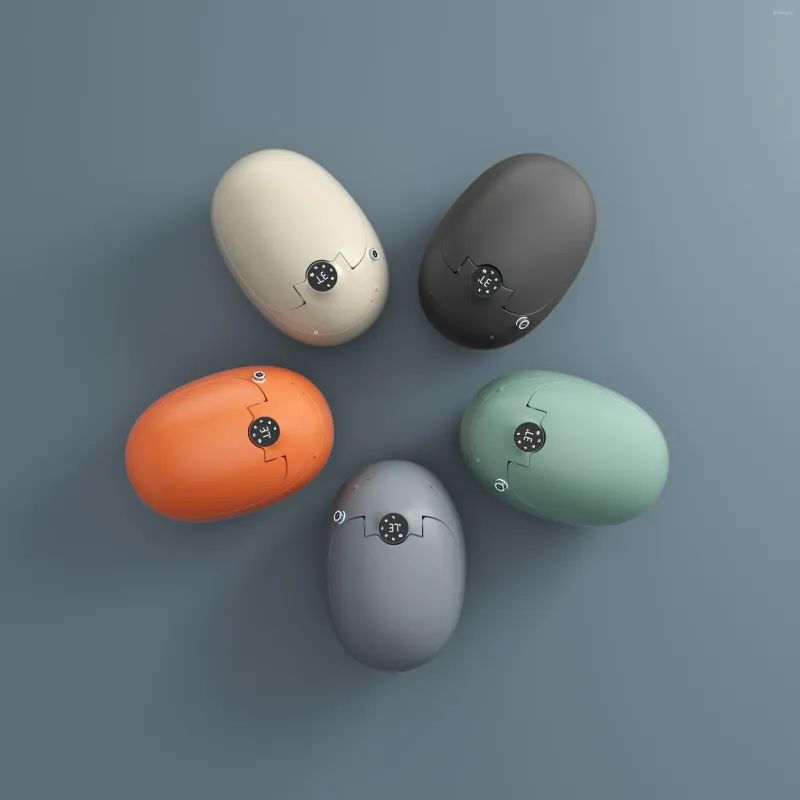
Comparing Types of Toilet Seat Shapes
After knowing the common toilet seat shapes, you should compare these different shapes of toilet seats before selecting the toilet bowl type perfect for you.
Here is a table that compares different kinds of toilet seats:
| Toilet Shape | Bowl Length | Space Requirement | Seat Comfort | Design Compatibility |
|---|---|---|---|---|
| Square Base Toilet | Usually up to 16 inches. Some are smaller, measuring about 14 inches. | Typically requires more floor space due to its angular design, usually needing at least 30 inches in width and depth. | The seat may feel less comfortable due to its angular shape, offering limited support for some users. | Modern, Geometric, Industrial |
| Oval or Elongated Toilet Bowl | Around 28–30 inches. | Requires a similar amount of space as round bowls but offers a slightly more elongated and comfortable shape, needing a minimum of 28–30 inches in depth. | Offer a more comfortable sitting experience with a larger, smoother surface area compared to round bowls. | Traditional, Contemporary |
| Round Toilet Bowl | 16.5 inches mostly. | Takes up less space, requiring a minimum of 28 inches in depth and about 20–22 inches in width. | Generally compact and less comfortable for extended use, as it has a smaller, more confined sitting area. | Compact, Space-Saving |
| D Shape Toilet Seat | Around 30–32 inches, but with a more distinct shape. | Similar to the oval seat but with a more distinct flat side, requiring at least 30 inches in depth and 20–22 inches in width. | Offer a balance between comfort and space, with a slightly more ergonomic design that accommodates the body well. | Modern, Sleek |
| U Shape Toilet Seat | Around 28–30 inches. | Requires a similar space to D-shaped seats, around 28–30 inches in depth and 20 inches in width. | Similar to the D-shaped seat but may feel more open and comfortable, especially for those with larger body types. | Commercial, Shared Spaces |
| Egg Shaped Toilet | Typically range from 30–32 inches. | Requires similar space as an elongated seat, with a minimum of 30 inches in depth and 20–22 inches in width. | Known for superior comfort due to its smooth, ergonomic curves that provide ample space and support during use. | Designer, Luxury |
Toilet Shapes for Specific Needs
Choosing the right toilet shapes goes beyond aesthetics. It's essential to consider the needs of those who will use them.
Here's a breakdown of toilet shapes suited for specific needs and preferences:
1. Singles or Couples
Recommended Shape: Oval or Elongated.
Singles or couples often prioritize style and comfort in their bathrooms. Oval and elongated toilet shapes provide an ideal combination of aesthetics and ergonomic support, creating a modern and inviting space.
2. Families with Children
Recommended Shape: Round Bowl or U-Shape.
For families, particularly those with young children, ease of use and space-saving features are key considerations. Round bowl or U-shaped toilets are compact and low-profile, making them easier for children to use independently.
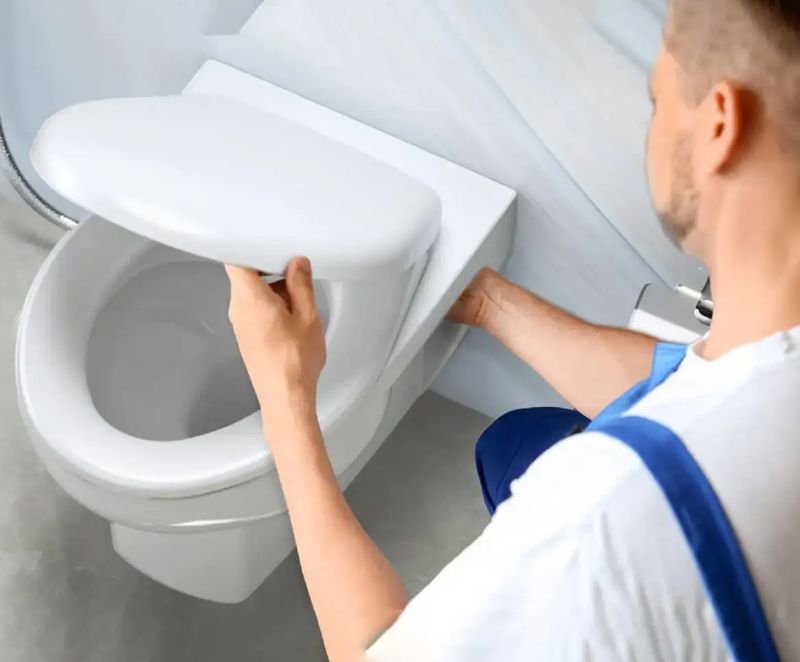
3. Elderly People
Recommended Shape: Elongated or D-shape with Raised Seat.
For elderly users, comfort and safety are paramount. An elongated or D-shaped toilet seat with a slightly raised seat height can reduce strain when sitting or standing.
4. Design for Plus-Sized People
Recommended Shape: Extra Wide Toilet Bowl.
For individuals requiring extra space and support, toilet seat shapes with an extra wide toilet bowl ensure a comfortable experience. These designs are often elongated for added stability.
Tip: If you would like additional recommendations or insights for specialized needs, please let us know!
Important Considerations: Which Toilet Bowl Shape is Best?
Choosing the perfect toilet bowl shape requires evaluating various factors beyond just appearance.
Here are the critical aspects to consider when selecting the ideal bowl shapes for your needs:
Confirm the Toilet Seat Size and Rough-In Size
Before purchasing, ensure the toilet seat size fits your bathroom's dimensions and that the rough-in size (distance from the wall to the center of the floor drain) matches your plumbing setup.
The common rough-in sizes are 10, 12, or 14 inches. Measure accurately to avoid installation issues.
Figure Out the Mounting Hole Distance
The mounting hole distance determines compatibility with various toilet seats. Measure the distance between the two seat-mounting holes on the toilet bowl to ensure your chosen seat fits seamlessly.
Comfort
Comfort is a top priority, especially for households with frequent usage. Let's examine how the toilet seat shapes and the ergonomic design contribute to comfort, especially for users with varying body types:
| Toilet Shape | Bowl Length | Space Requirement | Seat Comfort | Design Compatibility |
|---|---|---|---|---|
| Square Base Toilet | Usually up to 16 inches. Some are smaller, measuring about 14 inches. | Typically requires more floor space due to its angular design, usually needing at least 30 inches in width and depth. | The seat may feel less comfortable due to its angular shape, offering limited support for some users. | Modern, Geometric, Industrial |
| Oval Toilet Bowl | Around 28–30 inches. | Requires a similar amount of space as round bowls but offers a slightly more elongated and comfortable shape, needing a minimum of 28–30 inches in depth. | Offer a more comfortable sitting experience with a larger, smoother surface area compared to round bowls. | Traditional, Contemporary |
| Round Toilet Bowl | 16.5 inches mostly. | Takes up less space, requiring a minimum of 28 inches in depth and about 20–22 inches in width. | Generally compact and less comfortable for extended use, as it has a smaller, more confined sitting area. | Compact, Space-Saving |
| Elongated Toilet Seat | Usually 18.5 inches. | Requires more room than round seats, with a minimum of 30 inches in depth and about 20–22 inches in width. | Provide greater comfort due to its longer design, offering more room and a more relaxed sitting posture. | Compatible with different bathroom layouts. |
| D Shape Toilet Seat | Around 30–32 inches, but with a more distinct shape. | Similar to the oval seat but with a more distinct flat side, requiring at least 30 inches in depth and 20–22 inches in width. | Offer a balance between comfort and space, with a slightly more ergonomic design that accommodates the body well. | Modern, Sleek |
| U Shape Toilet Seat | Around 28–30 inches. | Requires a similar space to D-shaped seats, around 28–30 inches in depth and 20 inches in width. | Similar to the D-shaped seat but may feel more open and comfortable, especially for those with larger body types. | Commercial, Shared Spaces |
| Egg Shaped Toilet | Typically range from 30–32 inches. | Requires similar space as an elongated seat, with a minimum of 30 inches in depth and 20–22 inches in width. | Known for superior comfort due to its smooth, ergonomic curves that provide ample space and support during use. | Designer, Luxury |
Space
Evaluate how much space the toilet will occupy in your bathroom. Here is some advice for compact or spacious spaces:
- Compact spaces: Opt for round or U-shaped toilets.
- Spacious bathrooms: Elongated, square base or egg-shaped toilets add luxury and comfort.
Your Special Needs
Tailor your choice to specific requirements:
- Families: Compact designs like round bowls save space and are child-friendly.
- Elderly or disabled users: Raised and elongated seats with grab rails ensure safety.
- Plus-sized individuals: An extra wide toilet bowl offers superior comfort and support.
Check Door Clearance
Ensure the toilet doesn't obstruct door movement, especially in smaller bathrooms. Measure the distance between the toilet's edge and any opening doors.
Compare Toilet Price
- Prices vary widely because of different toilet shapes and designs:
- Round and U-shaped toilets: Typically more affordable.
- Designer shapes (e.g., egg-shaped): Higher cost but excellent for upscale bathrooms.
Replacement Parts
The more common the toilet bowl shapes, the easier they are to find replacement seats and parts. The most common toilet bowl shapes are circular and oval.
Less common toilet bowl shapes, such as square or rectangular ones, will make it more difficult to find replacement toilet seats if one cracks or wears out.
Accessory Equipment
Consider compatibility with add-ons like bidet-style toilet seats for enhanced hygiene, toilet rails for safety and accessibility, and child toilet seats to adapt to younger consumer needs.
Please note that circular or oval-shaped toilet bowls are much easier than square or rectangular-shaped toilet bowls to pair with other toilet equipment.
FAQs
What kind of toilet should I use in a small bathroom?
For a small bathroom, round-shaped toilets are the best option due to their compact design. They occupy less space while maintaining functionality.
If you need a sleek, modern look, consider a D-shaped toilet seat as it balances space-saving and aesthetics.
Which toilet shape is most comfortable?
Elongated toilet seats are widely regarded as the most comfortable due to their ergonomic design and extra sitting space. They're ideal for long-term use and offer better support, especially for adults and elderly users.
What is the most popular toilet shape?
The elongated toilet bowl is the most popular shape because it combines comfort with modern style. It fits well in medium to large bathrooms and is compatible with a variety of design themes.
What is the labor cost to install a toilet?
The labor cost for installing a toilet typically ranges between $150 to $350, depending on the complexity of the installation and regional pricing. Additional fees may be required if plumbing adjustments are required.
How long does it take a plumber to install a toilet?
On average, a plumber can install a toilet in about 2 to 4 hours. This timeframe includes removing the old toilet, preparing the area, and securing the new one in place. Complex setups or unforeseen issues may extend the time.
Closing Thoughts
Choosing the right toilet shape is a decision that combines functionality, comfort, and style. Toilets are a long-term investment, typically lasting 10 to 15 years or more.
So you should consider all the important factors to choose the right one for you! Major considerations include suitable toilet shapes for specific needs, space and style requirements, budgeting, and installation and replacement issues.
Take your time to evaluate all factors, and don't hesitate to contact jabra sanitary team for expert advice on toilet replacement, and to explore our wide range of models.
Our support team is ready to assist you with all your toilet needs, from selection to installation, ensuring a seamless and hassle-free experience.







